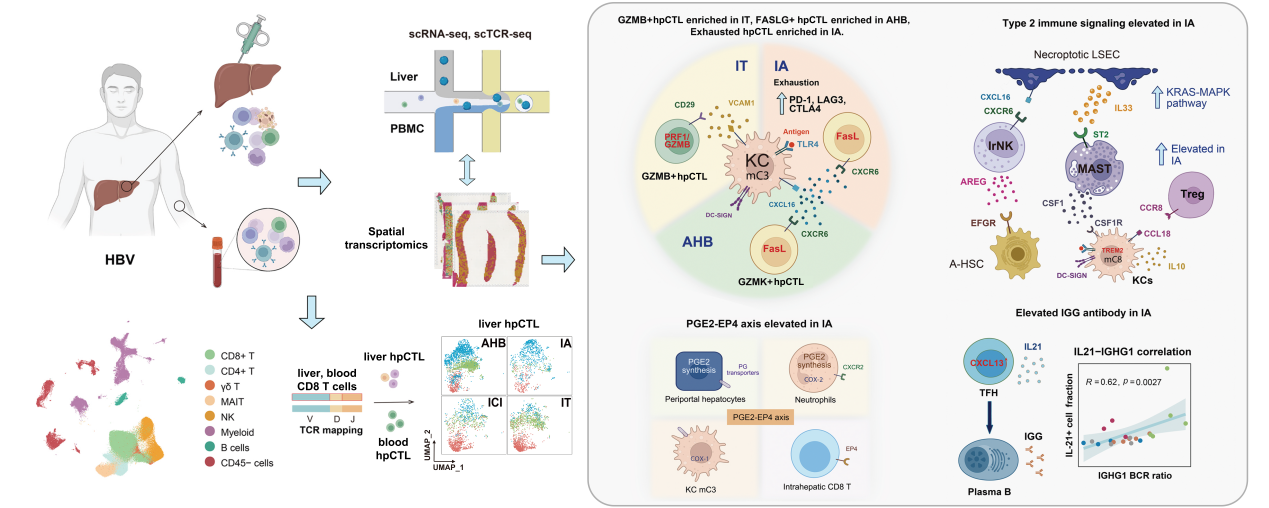
A research team led by ZHANG Fan at the Hefei Institutes of Physical Science of the Chinese Academy of Sciences, together with Prof. HUANG Zhiwei's group at Harbin Institute of Technology, has mapped a core immune network that drives the progression of hepatitis B.
Their study, recently published in Science Bulletin, reveals how distinct immune cell interactions shape disease stages and suggests new targets for therapy.
Hepatitis B virus (HBV) remains a global health challenge, particularly in Asia and Africa. While most adults clear the infection, early-life exposure often results in chronic infection that progresses through distinct clinical stages: immune tolerance, immune activation, and inactive carrier state. Understanding the cellular mechanisms driving transitions between these phases is essential for the development of curative treatments.
In this study, using single-cell RNA sequencing and immune receptor profiling, the researchers analyzed liver and blood samples from hepatitis B patients at various clinical stages. Their findings show that the transition from immune tolerance to active inflammation is orchestrated by a network of cytotoxic T cells, regulatory macrophages, antibody-producing plasma cells, and neutrophils.
CD8+ T cells displayed diverse functional states, with exhausted subsets predominating during the immune-active phase—underscoring T cell dysfunction as a critical barrier to viral clearance. Liver-resident macrophages were shown to play a dual role, both activating T cells and dampening immune responses by expressing PD-L1 and IL-10 and recruiting regulatory T cells.
They also found that certain liver cells, especially those near the portal vein, are more prone to HBV infection due to high expression of viral entry receptors. These infected cells downregulated immune-activating signals, contributing further to immune evasion. Additionally, increased plasma cell activity and antibody levels, along with neutrophil accumulation and immune-suppressive signaling, were linked to liver inflammation and damage.
By integrating these insights, the study outlines a detailed picture of how immune environments change during HBV infection. This knowledge paves the way for novel treatment approaches that could reinvigorate T cell responses or block key suppressive pathways.

Schematic overview of experimental design and mechanistic insights into cellular immune phenotypes across clinical stages of hepatitis B. (Image by ZHANG Fan)

86-10-68597521 (day)
86-10-68597289 (night)

52 Sanlihe Rd., Xicheng District,
Beijing, China (100864)

